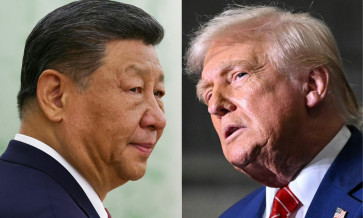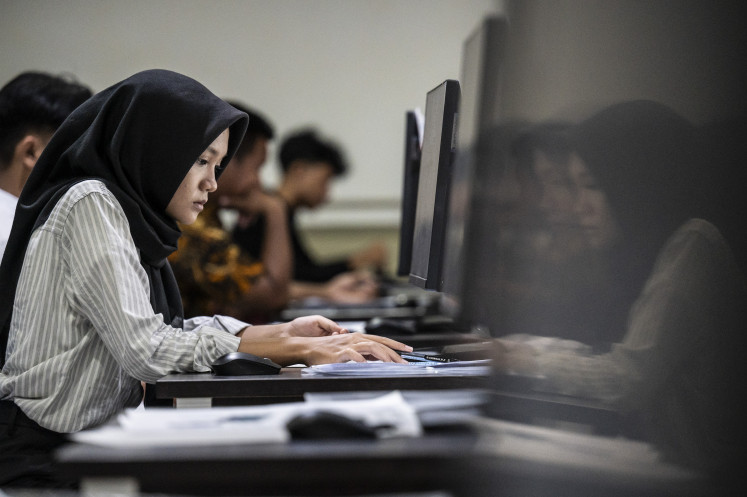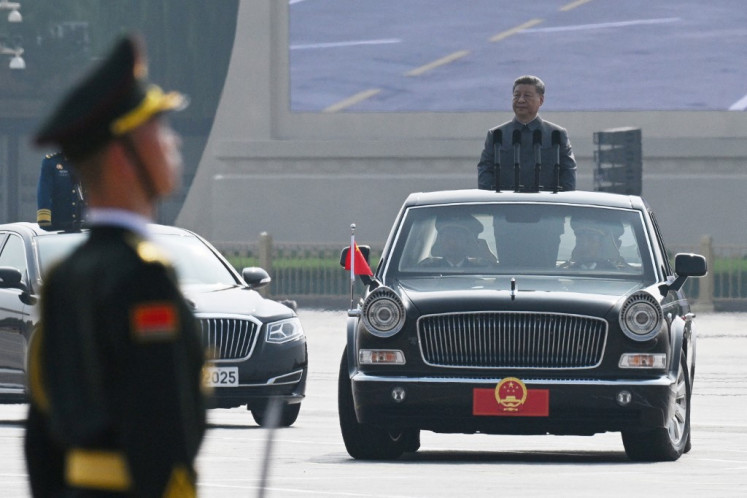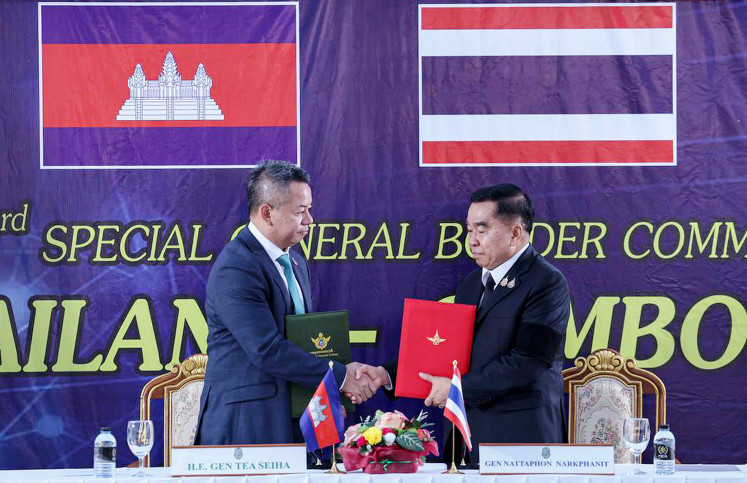Popular Reads
Top Results
Can't find what you're looking for?
View all search resultsPopular Reads
Top Results
Can't find what you're looking for?
View all search resultsHow digital natives are driving consumer spending in Indonesia
Asian consumers are increasingly concerned about climate risk and sustainability.
Change text size
Gift Premium Articles
to Anyone
A
sia is the world’s consumption growth engine — miss Asia and you could miss a US$10 trillion consumption growth opportunity over the next decade. Indonesia will make a large contribution. New research from the McKinsey Global Institute (MGI) finds that Indonesia’s consumption could grow by $400 billion over the next decade.
This large potential reflects the size of Indonesia’s growing consumer markets amid fast-rising incomes. By 2030, as much as 70 percent of the population could belong to what we call the “consuming class” — spending more than $11 a day in purchasing power parity terms and therefore able to afford not only basics like food and housing, but also discretionary spending. That is up from 45 percent today and only 25 percent 10 years ago.
Over the past two decades, almost all consumption growth came from the two lower tiers of the consuming class (spending between $11 and $70 a day in purchasing power parity terms). But over the next 10 years, 80 percent of that growth is expected to come from the two highest tiers (spending from $30 a day or more in purchasing power parity terms).
Indonesia is one of the Asian economies that is experiencing the fastest growth in upper-middle-income households. The number of those households are rising not only within the urban cluster centered on Jakarta, but well beyond. Cities including Medan in North Sumatra, Makassar in South Sulawesi and the East Java capital of Surabaya are each set to experience an increase in such households of around 50 percent.
Scale and rising incomes will continue to be major forces propelling consumption, but the story of the next 10 years is one of rising diversity in consumer markets as social and technological change coincide. Let’s explore three distinct trends in Indonesia:
Digital natives. So-called “digital natives” born between 1980 and 2012 and including members of Generation Z and millennials are expected to account for half of Indonesia’s consumption by 2030. This is a generation that increasingly lives online, and are voracious consumers of online content and services.
Indonesia’s smartphone penetration is high at 72 percent, and Gen Zers spend an average of 8.5 hours a day on their phones. This mobile-first approach is fueling the rise of highly integrated digital ecosystems, including super apps — one-stop digital shops such as Grab and Gojek that each has more than 10 million monthly active users in Indonesia and covering needs financial services, mobility, food delivery, entertainment, lifestyle and even health.
A new channel mix. Indonesia is experiencing what might be called a hybrid model with a soaring share of e-commerce alongside digitized traditional stores. E-commerce in Indonesia is projected to grow at a compound annual rate of 25 percent from 2020 to 2025. The pandemic has accelerated this trend—a 2020 McKinsey consumer sentiment survey indicated a 60 percent increase in intent to spend online post-pandemic by Indonesian consumers.
This shift to digital is also impacting B2B trade. Indonesia has more than four million traditional grocery stores that provide livelihoods to millions. Over the next few years, we expect many of these stores to be modernized through eB2B services offered by digital platforms such as Bukalapak. This will increase their efficiency and make them more resilient even in the face of growing modern trade.
Eco-responsibility. Asian consumers are increasingly concerned about climate risk and sustainability. A 2020 McKinsey survey asked if respondents perceived sustainable packaging as more important than they did before COVID-19, and around 80 percent of respondents Indonesia said that they were more concerned, a higher proportion than among their counterparts in Europe and the United States.
This is fueling eco-consumption, including demand for electric vehicles. The share of vehicle sales from different types of EVs (including battery, fuel-cell, plug-in hybrids, and hybrids) could reach as much as 35 percent by 2030.
As companies respond to the diversifying Asian consumer landscape with new offerings and business models, so the more people on lower incomes can access and afford the goods and services they want. In the past, consumption tended to follow an S-curve which rises slowly at the start before climbing steeply once income levels are high enough and then plateauing. But much flatter curves could now emerge as the relationship between consumption and incomes breaks down in some categories.
Take transportation by private vehicle as an example. New ways of buying mobility such as ride hailing are much less dependent on income because consumers who cannot afford to own a car can still have access to private vehicle–based mobility because it is relatively inexpensive, and price is therefore no longer a barrier. Indonesia has higher penetration of ride-hailing than higher- income nations such as Japan and South Korea with large technology players such as Grab and Gojek prominent.
Housing is another example of consumers sharing rather than owning as a way to overcome income constraints. Asia is experiencing a shift toward renting rather than owning houses given the fact that buying a home is increasingly unaffordable to many consumers. In Jakarta, the price- to-income ratio is 22, compared to nine in New York, and the proportion of households that rent rather than buy rose from 30 percent to 38 percent in 2020.
Indonesia’s consumer landscape is changing rapidly. New behavior and preferences are coming to the fore and driving consumption growth in certain areas. Income may no longer by the primary driver of consumption patterns. Companies serving Indonesia’s varied consumers need to redraw their map of growth.
***
Oliver Tonby is senior partner in Singapore office and Phillia Wibowo a managing partner in Indonesia office, both of McKinsey & Company. These views expressed are personal.










